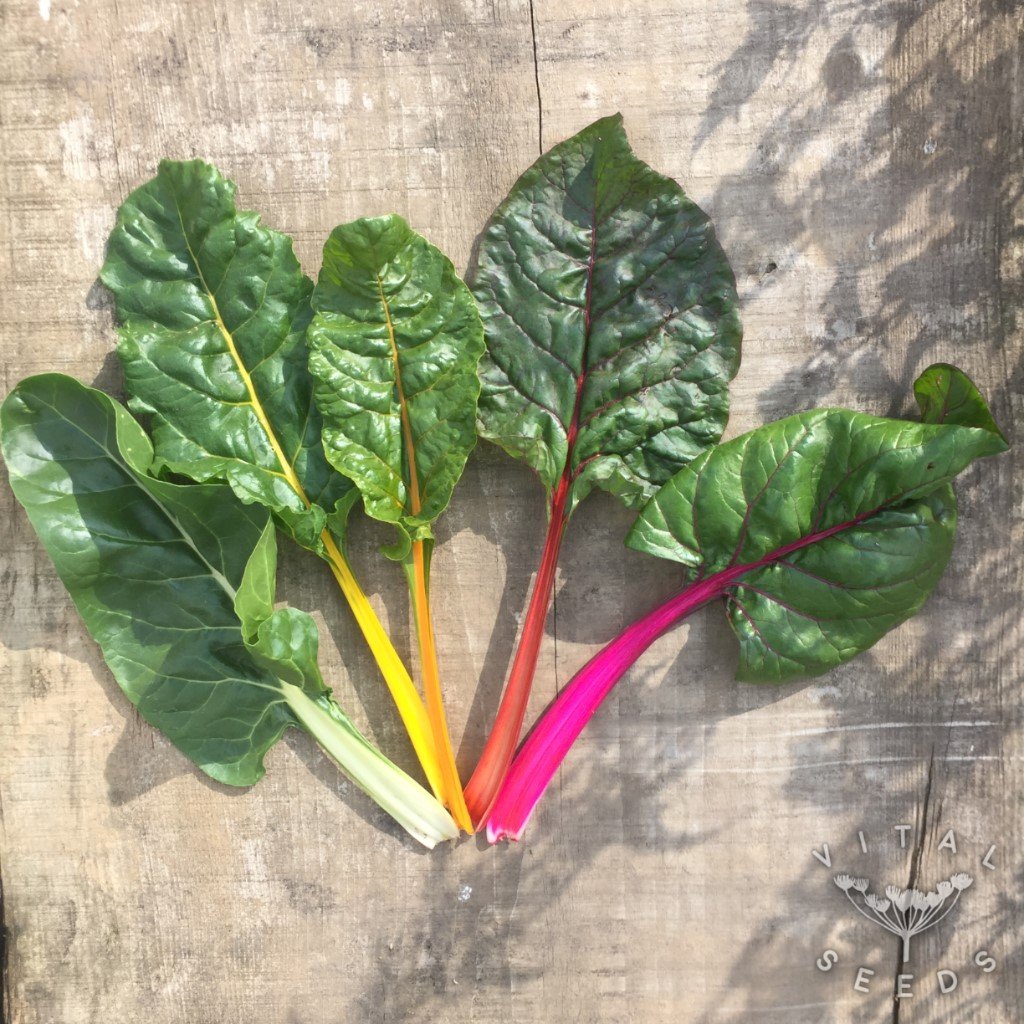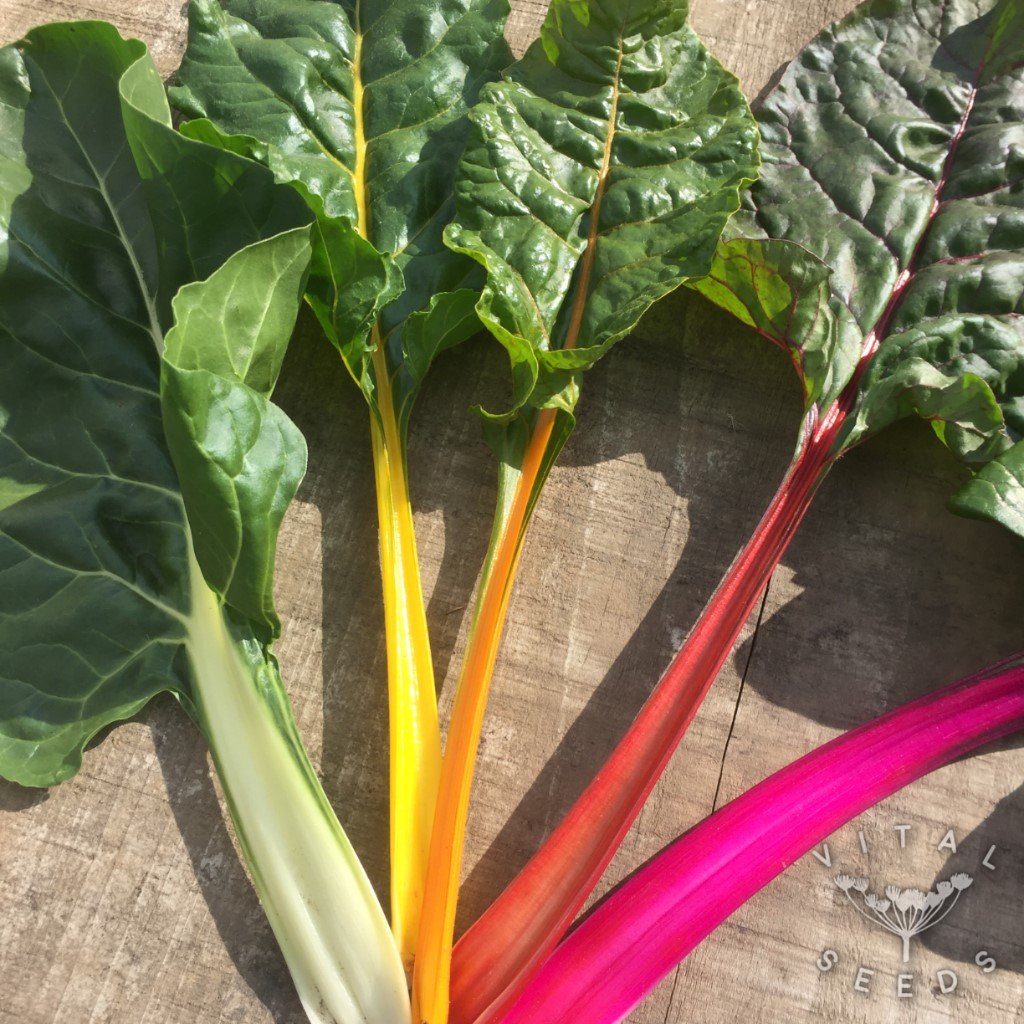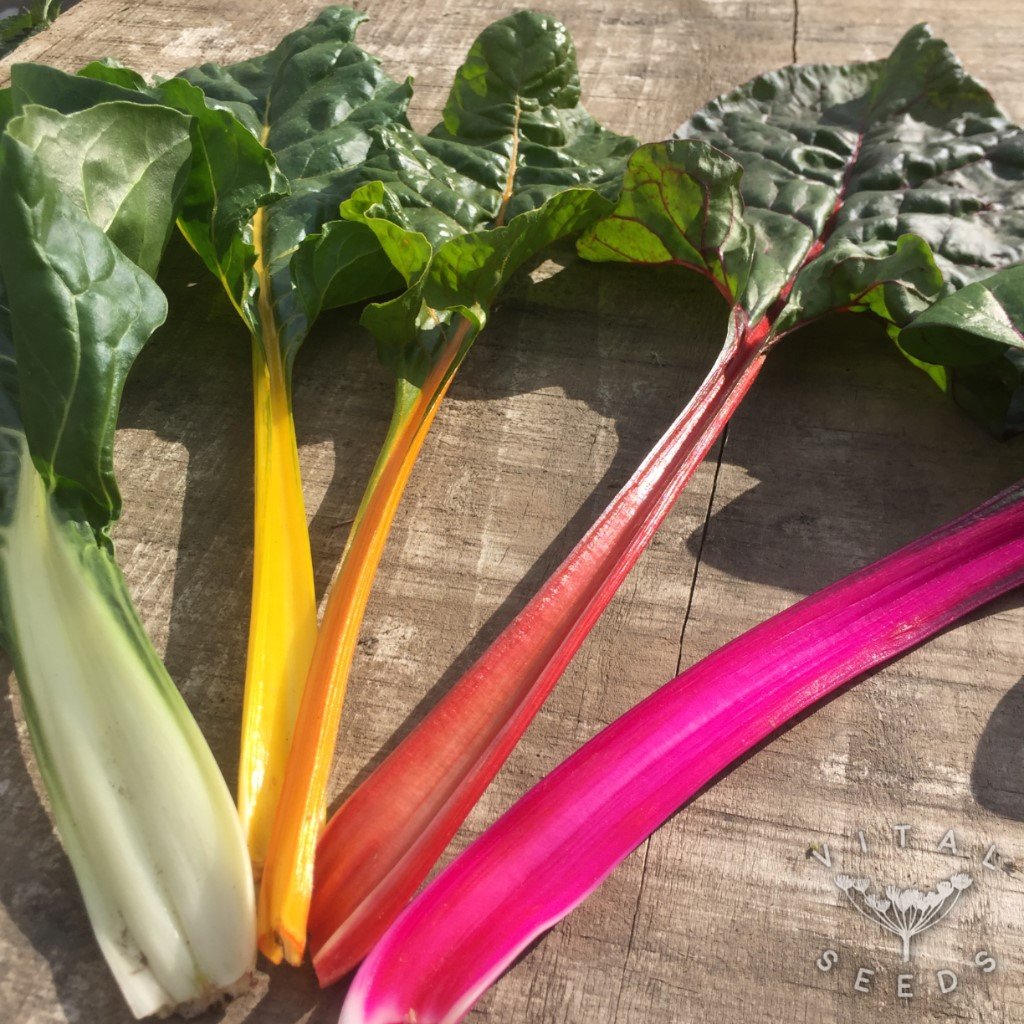Chard – Five colours (Organic)
£2.90 – £4.20
A beautiful chard mix of red, pink, orange, yellow and white stalks with contrasting green and maroon leaves. Harvested as baby leaf in less than 6 weeks. Both the tender leaves and stalks are easy to fry, steam, blanch or add to an omelette. This variety of chard is less hardy and doesn’t handle frost as well, so best not relied on as your only winter green.
(Approximate seed count – 130)

| Month | J | F | M | A | M | J | J | A | S | O | N | D | ||||||||||||
|---|---|---|---|---|---|---|---|---|---|---|---|---|---|---|---|---|---|---|---|---|---|---|---|---|
| Sow | ||||||||||||||||||||||||
| Plant | ||||||||||||||||||||||||
| Harvest | ||||||||||||||||||||||||
Seed Sowing
Sow your chard seeds from February through to August; they are ideal for direct sowing from March onwards. Can be sown indoors in modules from February and planted out later if that suits you. Sow seeds 1.5 cm deep at most; too deep and they will not germinate. Sowings after mid-summer will crop until spring.
Transplanting
Ensure your seedbed is free from weeds; directly sow your seeds in rows around 25 cm apart, sow the seeds 10 cm apart and thin out later to 25 cm. Young plants should be ready after around 4-5 weeks; plant at 25 cm x 25 cm apart and water in well.
Plant Care
Chard is one of the easiest crops to care for. If it’s really hot and dry, they can show signs of wilting; watering them and harvesting early in the morning can help. Pick the leaves often and small for the best quality and flavor.
Challenges
High humidity can cause fungal and bacterial problems, which can, however, be avoided by rotating crops, not overcrowding, and not overwatering. Leaf miners can cause damage if left unchecked; these little grubs eat between the layers in the leaf and should be removed from the plant. Slugs and snails can be an issue; hand-picking or other slug control may be necessary.
Harvest
Leaves should be ready around 8-12 weeks after sowing. Harvest the larger outer leaves, keep around 8 leaves to grow on and keep picking regularly to discourage bolting.
Culinary Ideas
Sometimes chard can be an appropriate replacement for spinach. Wilted with butter and garlic is a delicious side dish. It can also be added to quiches and tarts; it’s great curried or made into pakoras. Add to green smoothies for a nutrient boost; chard is full of vitamins A, K and C as well as potassium, magnesium, iron, and fiber.
Seed Saving
To save chard seeds, grow at least 20 plants to protect genetic diversity and isolate them from other plants of the species beta vulgaris. Chard is wind-pollinated and will cross easily with other flowering plants of the same species.
Seeds can be harvested when around two-thirds of the seedballs are brown. Cut branches or the whole plants at the base and put them in a dry, well-ventilated place to dry for at least 10 more days. Rub the seeds off the dry plant and store in a cool dry place; stored this way seeds can remain viable for up to 5 years.


